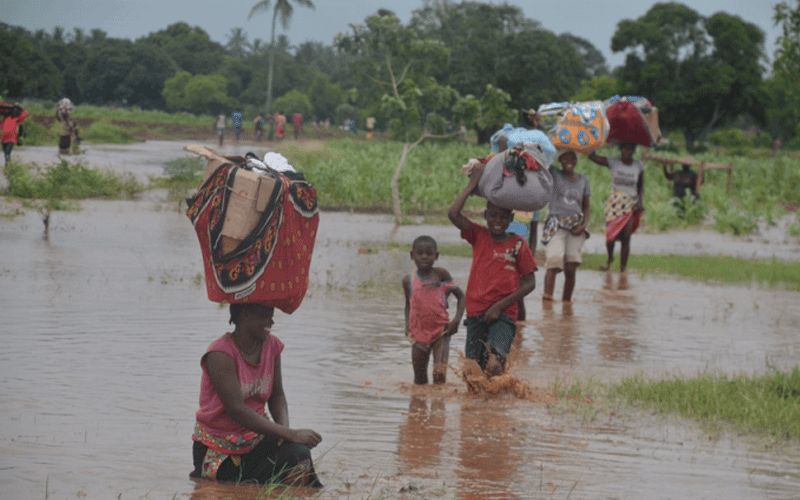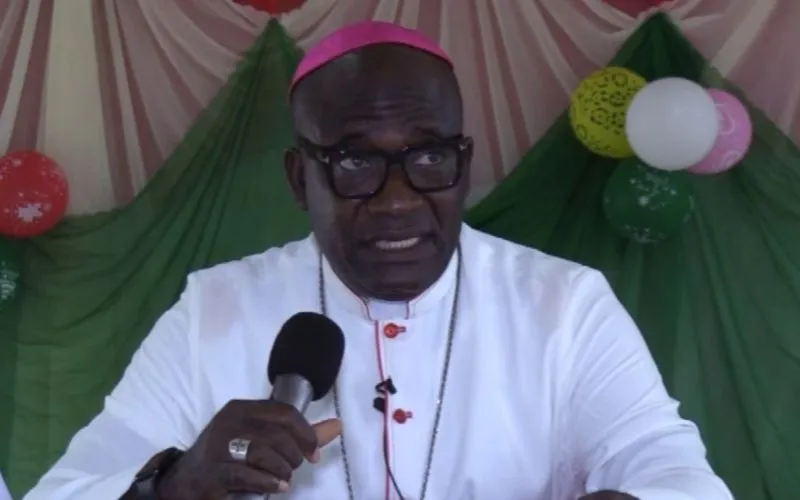While Bishop Kimengich provided some financial assistance, he had advised the taskforce to visit the Small Christian Community collaborative website and the Small Christian Communities Facebook Page and went on to write to the administrator of the grant channeled through SCCs, Fr. Healey of the Maryknoll Society.
“I am glad to recommend Moderator Peter Lekorini for a good job he is doing,” Bishop Kimengich wrote to Fr. Healey and narrated the events of December 3 including his contribution of about $300.00 saying, “Yesterday the team from Lodwar visited me in Eldoret were l have been appointed as a Bishop. Since I have not settled, I was able to raise Kshs.30,000/ to help the victims build homes for their families destroyed by landslides due ongoing heavy rains.”
Favorably recommending St. Monica’s taskforce in general and Lekorini in particular as an active member of the new way of being Church through SCCs, the Kenyan Prelate wrote to the administrator of the subsidy, “We have worked with Moderator Peter Lekorini for some time as an active Mwanajumuiya. Kindly support them Father to reach out to the desperate families.”
A couple of days later, Fr. Healey emailed Bishop Kimengich narrating his December 4 intervention, “Yesterday Richard Nkoroni, a member of St. Monica SCC, visited me in Nairobi and we gave him 10,000/= Kenyan Shillings (approximately $100) for the landslide victims in Lodwar. We are helping other SCCs with similar funds.”
In the same email, the Maryknoll Priest who has specialized in SCCs through research and practice highlighted to the Kenyan Bishop “the four essential characteristics of the SCC Model of Church in Eastern Africa.”
SCCs in Eastern Africa, Fr. Healey stated, are characterized with “regular practical action and outreach,” a characteristic that speaks to the subsidy channeled through SCCs popularly known by its Swahili expression, “Mfuko wa Jumuiya.”
Other vitally important aspects characterizing SCCs in Eastern Africa, Fr. Healey wrote, include “weekly lectionary-based faith-sharing that connects the Gospel to daily life” and the fact that SCCs are “structurally connected to the parish as a ‘communion of communities’ pastoral, ecclesial model of church.”
“Ongoing formation and training of SCC leaders and members” has also been identified as a significant component of the new way of being Church in Eastern Africa, Fr. Healey noted.
In an email interview with ACI Africa regarding aid to victims of rain-related disasters in Kenya, Fr. Healey said referencing the regional Church under the Association of Member Episcopal Conferences in Eastern Africa (AMECEA), “After five years of coordinating the “Mfuko wa Jumuiya” under the AMECEA Small Christian Community Training Team, what is unique about this help for landslide victims in Lodwar is that the funds of the Catholic Church have been combined with Ksh. 20,000.00 ($200) from the (Member of County Assembly) MCA Loliyanga Ward and Ksh. 100,000.00 ($1,000.00) from the Kenya Red Cross Society. A real team effort and a model for others.”
Other assistance for St. Monica’s SCC came from members of other SCCs of the Holy Cross Parish, Lekorini confirmed.








